| The smallest things we will talk about are galaxies:
typically 10 billion (1010) stars and a size of 20 kpc (1020 m) M51 in Can Ven: HST picture |
 |

The water beetle was sent on an exploration, and after darting about on the surface and finding no rest, it dived down to the depths, whence it brought up a bit of mud, from which the earth grew by accretion. Apache Creation Myth
| The smallest things we will talk about are galaxies:
typically 10 billion (1010) stars and a size of 20 kpc (1020 m) M51 in Can Ven: HST picture |
 |
| But most of the time we'll be talking about clusters of galaxies: this is VIrgo. typically 1 million billion (1015) Msun and a size of 2 Mpc (1022 m) |
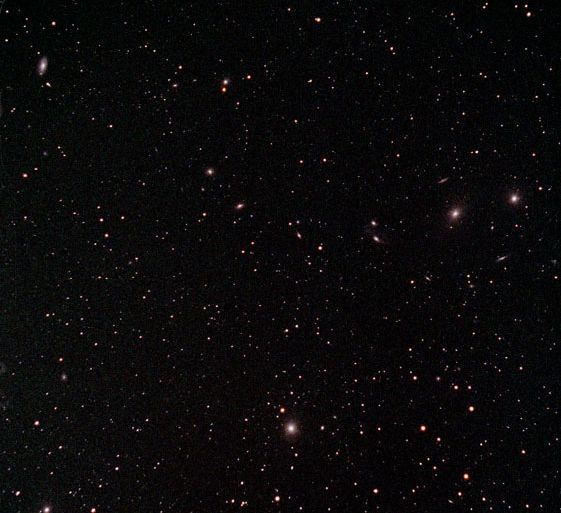 |
| Hubble
found vel. of recession ∝
distance \color{red}{v = Hd,H = 70{\rm{ km/s/Mpc}}}
1 Mpc (megaparsec) = 3x1022 m. Note although all galaxies are receding from us, does not imply we are at the centre: in the currant cake model all currants see all the others as receding |
 |
| RULE 1 in Physics 100: Never mix your units!)
\color{red}{
\begin{array}{l}
H = 70 \times 1000/3 \times 10^{22} \approx 2 \times 10^{ - 18} s^{ - 1} \\
\Rightarrow \frac{1}{H} \approx 5 \times 10^{17} {\rm{ s }} \approx 17 \times 10^9 {\rm{ yrs.}} \\
\end{array}}
|
 |
| What does this time represent? Must be age of universe: if expansion does not change i.e. 17x109 yr. ago, all the galaxies were in the same place. Universe had a beginning, implied by the big bang. Can run Hubble expansion back: we would like to use this to predict what will happen in the end |





|

The sky becomes black, Earth sinks into the sea From Heaven fall the bright stars The sea ascends in storm to Heaven It swallows the Earth, the air becomes sterile
From the Hyndluljod (Iceland)
How can we tell if the universe will expand forever?
| As a model, consider this as an escape velocity problem. How hard do we need to throw a galaxy on the "outside" so that it escapes? Note: our calculation had better not depend on r!
\color{red}{
\frac{1}{2}mv^2 - \frac{{GMm}}{r} = 0}
butv = Hr and the total mass of the universe inside
M = 4π/3 ρ r³ |
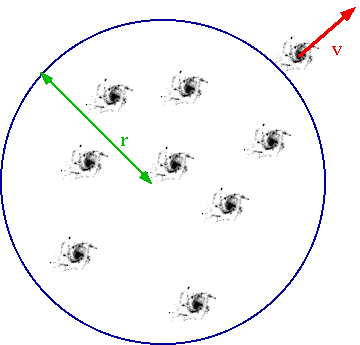 |
H²r² = 2G4π/3 ρ r²
(we got lucky: the r cancels out!). We can turn this round and write it as an equation for ρ
Hence the critical density
ρ₀ ~ 9 x 10-27 kg m-3 ~ 6 Hydrogen Atoms m-3 (Number is flaky). We'll use \color{red}{\Omega {\rm{ = }}\frac{\rho }{{\rho _0 }}} , because some errors cancel out.
The entire future of the universe is given by this one number!!!!!!!!!
(and isn't it nice that the end of the universe is defined by Omega Ω!)So if
|
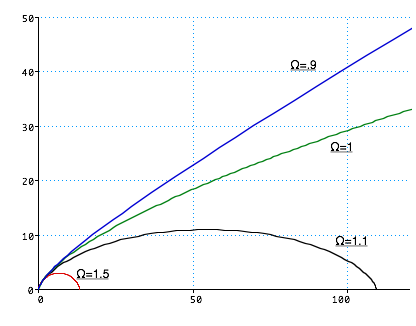 |
There is only a single God, Mixcoatl, whose image they possess, but they believe in another, invisible, god, not represented by any image, called Yoalli Ehecatl, That is to say, God Invisible, Impalpable, Beneficent, Protector, Omnipotent by whose strength alone...rules all things
Nahuatlan Myth
Can only see luminous matter: how much Dark Matter is there? Usually expressed as mass to luminosity ratio, relative to the sun.Count number of galaxies in a region of space, assume they consist of stars much like the sun, so assume
| Obviously must average over large enough volume such that universe is smooth R > 100 Mpc, and the universe is a very lumpy place! |  |
(Note all these numbers are uncertain to ∼ 20%!)
We live forever!!!
But wait a moment...
| direct observation i.e. measurement of velocities of individual stars in nearby => rotation curves or measurement of hydrogen via 21cm line or estimates of no. of stars | 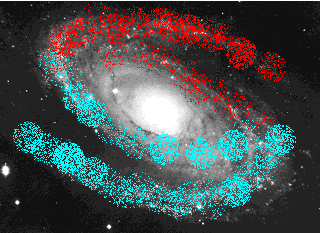 |
| Typical Spiral (NGC3198) R ≈ 20 kpc but outer parts are just seen as H gas | 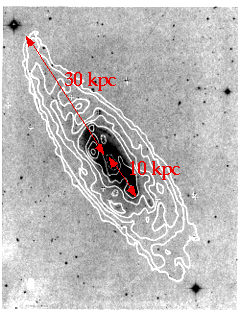 |
| Luminosity of galaxy should reflect mass | 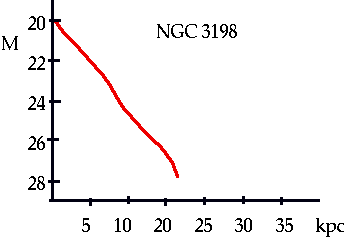 |
| Most of the light is fairly concentrated, so this should be good approx to the mass. but the outside part of the galaxy is rotating far to fast: i.e. velocity curve doesn't drop as expected. Means a lot of mass in outside part of galaxy |
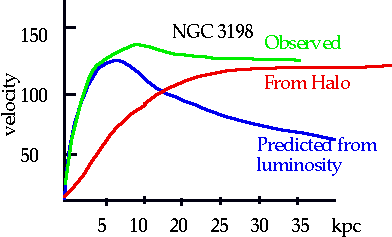 |
Implication: Mass of observed galaxy ≈ 1010 M₀,
R ≈ 2 kpc (for core)
Mass of halo ≈ 1013M₀, R ≈ 100kpc (except that we can't measure out there!)
What do we mean by mass of galaxy? In fact the visible part of the galaxy may just reflect the dark matter.
|
.gif) |
| A check: Large clusters contain a lot of hot gas, which is strong X-ray source
X-ray pictures measure density and temp: |
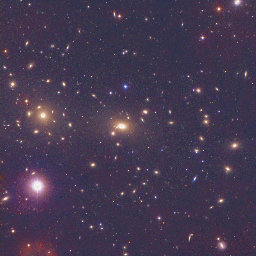
|

| For Abell 2218 (z = .18) again
\color{red}{
\frac{M}{L} \approx 300\frac{{M_o }}{{L_o }}}
M ≈ 1015 M₀ ⇒ Υ = 300Υ₀ |
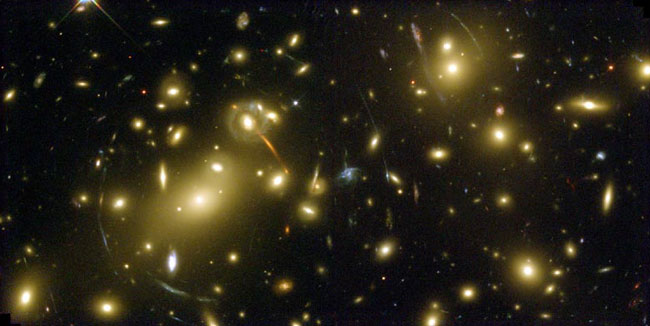 |
X-ray emitting material is gas: gets stopped in collision dark matter gets carried along
a) What the hell? i.e. what is the dark matter?
b) Why the hell? i.e. why is Ω~1 (after all it could be anything?)
Actually, there is a limit
Ω < 3
otherwise the universe would be younger than the earth (wouldn't that make the creationists happy!!)
Although these are similar cosmologically, they are very different from the point of view of detection.
| e.g. Queens-U de Montreal Picasso expt. Nucleus will recoil and transfer energy to super-heated freon liquid and cause transition to gas. |
| In solid, nucleus will recoil and transfer energy to lattice, flipping superconductor or sending off ballistic phonons. DEAP (Kevin Graham): will use 1 tonne of liquid argon. | 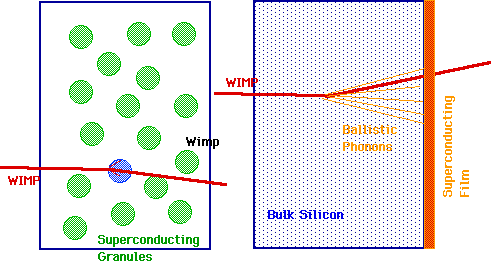 |
| COBE and WMAP comparison |
| Normally density fluctuations die away (e.g sound waves) but in massive fluid they get amplified by gravity |





| Dark Matter is bad enough, but now dark energy ... |  |
| Type 1a Supernovae Mv = -20 allows us to measure out to 3000Mpc |
| Hence importance of 1a supernovae: since we know (maybe) L, we can get $q_0$ directly. | 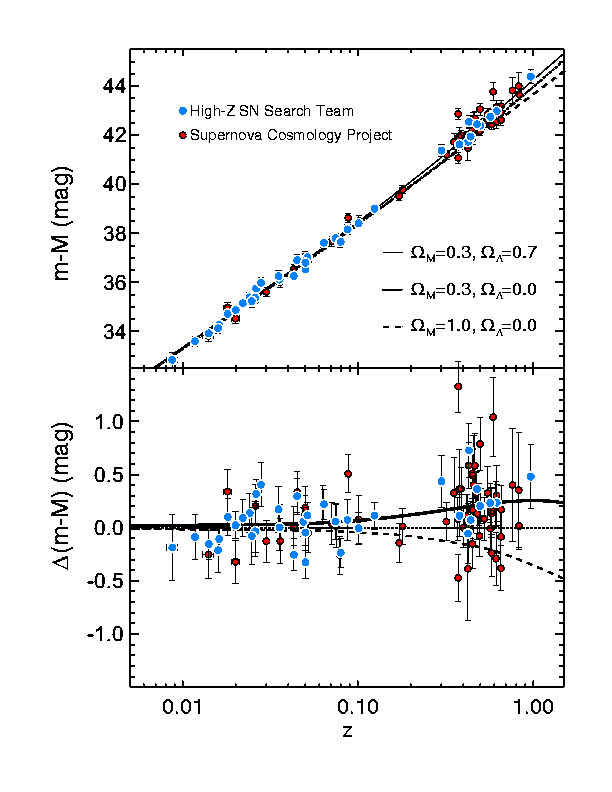 |
| Canada-France Hawaii Telescope (CFHT) | 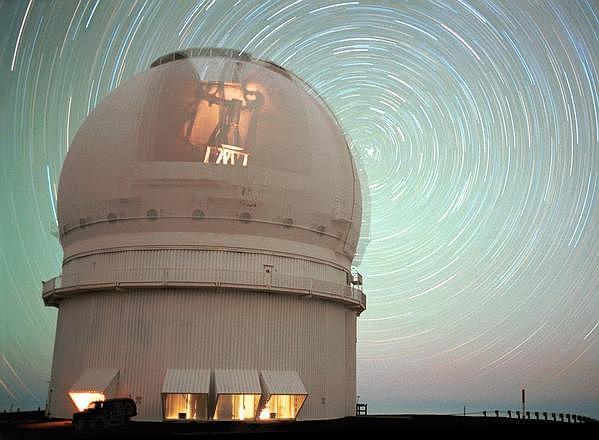 |
| (U of T and others) now provides best data from CFHT | 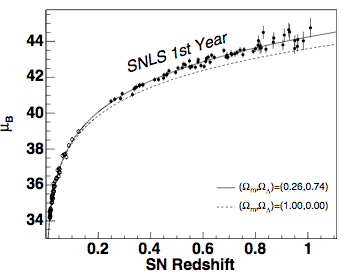 |
| implies a cosmological constant Λ (Einstein's "fudge factor"): in other words vacuum has an energy. |  |
The implication is that the expansion of the universe is accelerating: q₀,< 0(!)
Combining this with data from WMAP gives
so finally
|
 |
| The only working theory for particles (the standard model) gives \color{red}{
\Omega _\Lambda = 10^{110} - V_0
}
where V₀ is a (unknown) correction. You will notice a discrepancy! |
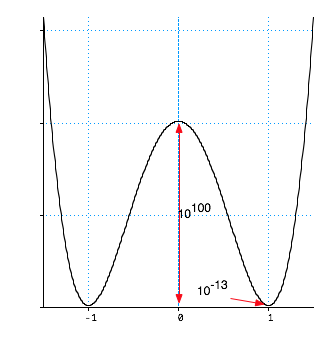 |
| e.g. SNLS has found one very odd SN: 03D3bb | 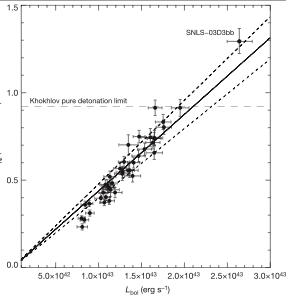 |